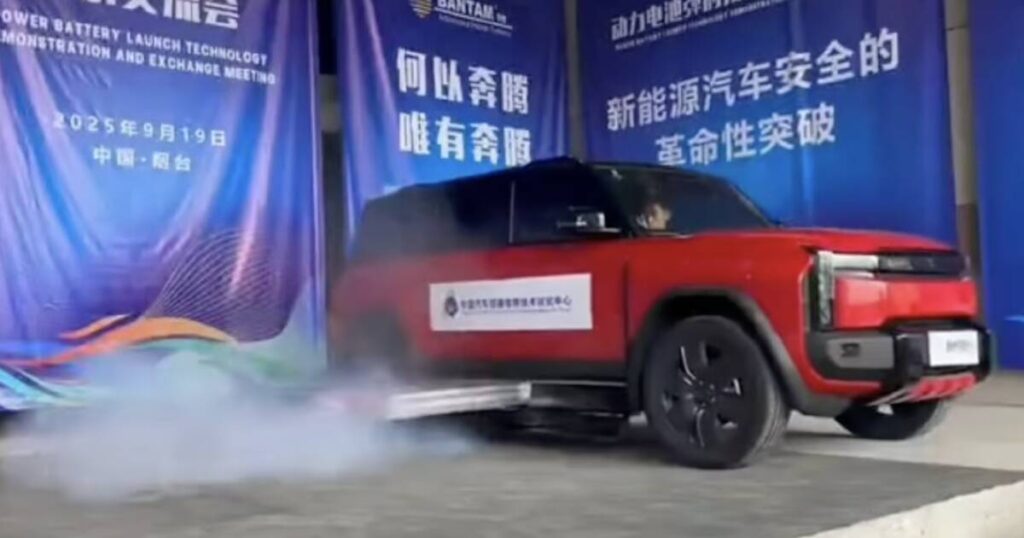
The Chinese Vehicle Collision Repair Technical and Research Center, in collaboration with Joyson Electronics, has unveiled a groundbreaking solution to a pressing issue in electric vehicles (EVs): the risk of battery fires. At a recent event, they demonstrated a technology capable of ejecting a vehicle’s high-voltage battery within seconds of detecting thermal runaway, a critical safety concern.
This innovative system was showcased using Chery’s iCar 03, where the battery was expelled 3-6 meters away from the vehicle using a gas generator mechanism, similar to an airbag deployment. The primary aim is to distance the battery from passengers before it ignites, thereby enhancing occupant safety.
While the demonstration video, widely circulated in Chinese media such as cnBeta, showed the battery being ejected with a dramatic flair into a nearby pit, it has raised concerns about the implications of ejecting a heavy battery at high speed. The potential for such a system to launch a battery weighing several hundred kilograms into unintended areas poses significant safety questions.
Understanding Thermal Runaway
Thermal runaway is a phenomenon where battery cells overheat due to internal short circuits, causing a chain reaction that can lead to temperatures soaring up to 1000°C. This process is notoriously difficult to halt once initiated, making early detection and intervention critical in preventing catastrophic fires in EVs.
EV fires can be caused by battery cells overheating after their cathodes and anodes make contact and short circuit, generating heat which spreads to surrounding cells.
Potential Implementation and Safety Measures
Should this technology transition into production vehicles, it may require additional features such as cameras and radar systems. These would ensure that the battery is not ejected into areas where it could endanger pedestrians or collide with other vehicles. However, as of now, neither the Chinese Vehicle Collision Repair Technical and Research Center nor Joyson Electronics have disclosed further details or plans regarding commercial availability.
Experts in the field are cautiously optimistic about the potential of this technology. Dr. Li Wei, an automotive safety engineer, noted, “The concept is promising, but the execution needs to be flawless. The implications of a misdirected battery ejection could be severe.”
Historical Context and Industry Reactions
The automotive industry has long grappled with the challenge of ensuring EV safety, particularly as the market for electric vehicles continues to expand. Previous solutions have focused on improving battery chemistry and enhancing cooling systems. However, the introduction of a high-speed ejection mechanism represents a novel approach to tackling the issue.
Automakers and safety regulators worldwide are closely monitoring developments in this area. The move represents a significant shift from traditional safety measures, highlighting the industry’s proactive stance in addressing emerging challenges associated with new technologies.
Looking Ahead
As the industry continues to innovate, the focus remains on balancing technological advancement with safety. The high-speed battery ejection system could potentially set a new standard in EV safety, provided that the concerns surrounding its implementation are adequately addressed.
Moving forward, the collaboration between automotive manufacturers, safety researchers, and regulatory bodies will be crucial in refining and adopting such technologies. The future of EV safety may well hinge on the successful integration of innovative solutions like this one.
For now, the world watches as this unusual yet potentially game-changing technology develops, hoping it will pave the way for safer electric vehicles on the road.







